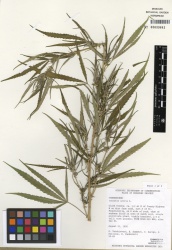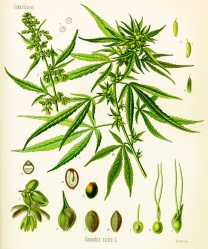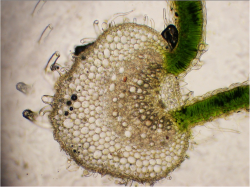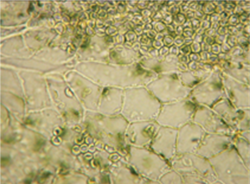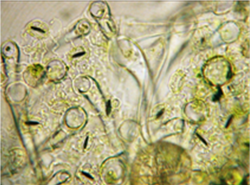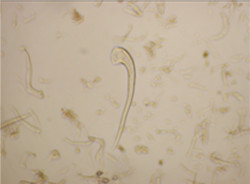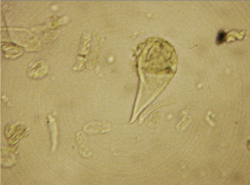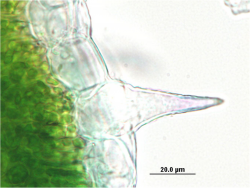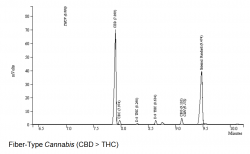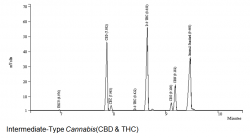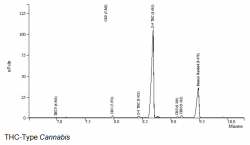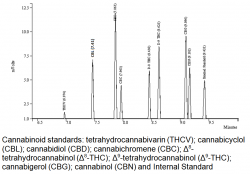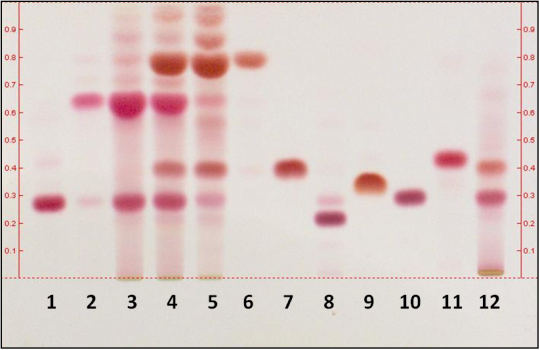Cannabis spp. (pistillate inflorescence and leaf)
Contents |
Nomenclature
Cannabis sativa L. Cannabaceae
Botanical Voucher Specimen
|
|
Organoleptic Characteristics
|
Macroscopic Characteristics
|
Microscopic Characteristics
University of Mississippi, University, MS 38677, USA]] [[Category:National Center for Natural Products Research, School of Pharmacy, University of Mississippi, University, MS 38677, USA]] [[Category:National Center for Natural Products Research, School of Pharmacy, University of Mississippi, University, MS 38677, USA]]
University of Mississippi, University, MS 38677, USA]] [[Category:National Center for Natural Products Research, School of Pharmacy, University of Mississippi, University, MS 38677, USA]] [[Category:National Center for Natural Products Research, School of Pharmacy, University of Mississippi, University, MS 38677, USA]] |
Gas Chromatography Identification
University of Mississippi, University, MS 38677, USA]] [[Category:National Center for Natural Products Research, School of Pharmacy, University of Mississippi, University, MS 38677, USA]] [[Category:National Center for Natural Products Research, School of Pharmacy, University of Mississippi, University, MS 38677, USA]] [[Category:National Center for Natural Products Research, School of Pharmacy, University of Mississippi, University, MS 38677, USA]] |
High Performance Thin Layer Chromatographic Identification
|
Cannabis spp. (rhizome) HPTLC ID Lane Assignments Lanes, from left to right (Track, Volume, Sample):
Reference Sample(s) Reference Standard Solutions: 1.0 mg/mL of each Δ9-Tetrahydrocannabinol, Δ9-tetrahydrocannabinolicacid, and cannabidiol in methanol. Reference Sample Preparations:100 mg of powdered plant material in 10 mL of dichloromethane, sonicate for 1 h, filter, and evaporate the extract to dryness under nitrogen. Dissolve the residue in 10 mL of methanol. Stationary Phase Stationary Phase:TLC, Silica gel 60RP-18 F254, 150 um (Sorbent Technologies) Mobile Phase Mobile Phase:0.1% glacial acetic acid in a mixture of methanol and water (75:25) Sample Preparation Method Test Sample Preparation: Prepare test sample as described under Reference Sample Preparations and apply 5uL. Derivatization reagent: Fast blue reagent– 5 mg/mL fast blue B salt in water. Detection Method Development:Saturated chamber, developing distance 70 mm from lower edge of the plate; relative humidity 33%, temperature 25°. Detection: Heat plate at 70°C for 2 min, dip (time 5, speed 5) in Derivatization reagent, dry, and examine under white light. Other Notes Images presented in this entry are examples and are not intended to be used as basis for setting specifications for quality control purposes. Identification: Compare Test Sample Preparation chromatogram with chromatograms of Reference Standard Solutions and Reference Sample Preparations. The Test Sample Preparation chromatogram is similar to that of the THC-type Reference Sample Preparation chromatogram. Additional weak zones may be present. The most intense zones in the chromatogram of the Test Sample Preparation are a purple zone in the lower-third section and a purple zone in the upper-third section of the chromatogram corresponding to THC and THCA, respectively,in the chromatograms of the Reference Standard Solutions and the THC-type Reference Sample Preparation. The Test Sample Preparation chromatogram exhibits no zones or a minor zone at about one-third the chromatogram and at an Rf corresponding to cannabidiol in the chromatograms of the Reference Standard Solutions (cf.Intermediate-type Cannabis and Fiber-type Cannabis). The Test Sample Preparation chromatogram exhibits minor zones in the upper-third of the chromatogram, above the zone corresponding to THCA in the chromatograms of the Reference Standard Solutions (cf. Intermediate-type Cannabis and Fiber-type Cannabis).
|
Supplementary Information
Sources
- ↑ MOBOT, Tropicos.org http://www.tropicos.org/Image/100003863
- ↑ American Herbal Products Association. March 2013. Organoleptic Analysis of Herbal Ingredients. AHPA: Silver Spring, MD http://www.ahpa.org/default.aspx?tabid=419
- ↑ Recommended methods for the identification and analysis of cannabis and cannabis products, United Nations Office on Drugs and Crime, Vienna, 2009. (ST/NAR/40) http://www.unodc.org/documents/scientific/ST-NAR-40-Ebook.pdf
- ↑ Köhler, Medizinal-Pflanzen in naturgetreuen Abbildungen und kurzerläuterndemTexte (1887)
- ↑ Recommended methods for the identification and analysis of cannabis and cannabis products, United Nations Office on Drugs and Crime, Vienna, 2009. (ST/NAR/40) http://www.unodc.org/documents/scientific/ST-NAR-40-Ebook.pdf
- ↑ National Center for Natural Products Research, School of Pharmacy, University of Mississippi, University, MS 38677, USA
- ↑ National Center for Natural Products Research, School of Pharmacy, University of Mississippi, University, MS 38677, USA
- ↑ National Center for Natural Products Research, School of Pharmacy, University of Mississippi, University, MS 38677, USA
- ↑ National Center for Natural Products Research, School of Pharmacy, University of Mississippi, University, MS 38677, USA
- ↑ National Center for Natural Products Research, School of Pharmacy, University of Mississippi, University, MS 38677, USA
- ↑ National Center for Natural Products Research, School of Pharmacy, University of Mississippi, University, MS 38677, USA
- ↑ National Center for Natural Products Research, School of Pharmacy, University of Mississippi, University, MS 38677, USA http://pharmacy.olemiss.edu/ncnpr/
- ↑ National Center for Natural Products Research, School of Pharmacy, University of Mississippi, University, MS 38677, USA
- ↑ National Center for Natural Products Research, School of Pharmacy, University of Mississippi, University, MS 38677, USA
- ↑ National Center for Natural Products Research, School of Pharmacy, University of Mississippi, University, MS 38677, USA
- ↑ National Center for Natural Products Research, School of Pharmacy, University of Mississippi, University, MS 38677, USA
- ↑ National Center for Natural Products Research, School of Pharmacy, University of Mississippi, University, MS 38677, USA http://pharmacy.olemiss.edu/ncnpr/
- Botanical
- Cannabaceae
- Media
- Voucher
- MOBOT, Tropicos.org
- Macroscopy
- American Herbal Products Association. March 2013. Organoleptic Analysis of Herbal Ingredients. AHPA: Silver Spring, MD
- Recommended methods for the identification and analysis of cannabis and cannabis products, United Nations Office on Drugs and Crime, Vienna, 2009. (ST/NAR/40)
- Köhler, Medizinal-Pflanzen in naturgetreuen Abbildungen und kurzerläuterndemTexte (1887)
- Microscopy
- GC
- National Center for Natural Products Research, School of Pharmacy, University of Mississippi, University, MS 38677, USA
- HPTLC
